Materials Lab Report Civil Engineering
The flexing strength of a material is also designated the rupture modulus. In the experiment, four different substances received analysis. The materials were: concrete, steel and varying substrate concentrations of timber. The report consists of three sections. The first segment review the examinations conducted in the experiment, finite component modelling and the assessment of the design model by a collection of graphs. In each of the trials the flexural strength mechanism provided parameters for the measurement of materials along with the application of simulations with respect to the rails having resilient and fractural qualities. The characteristics evaluated were the flexural strength regarding capacities of materials under load. The brittle rupturing tendencies of the samples received observation and documentation.
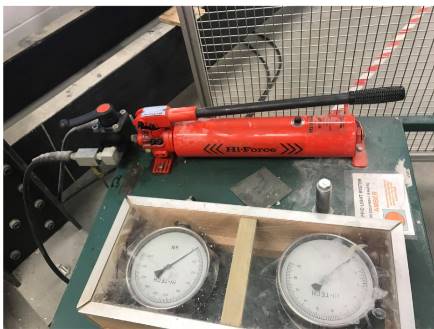
Fig. 1: Pressure Pump for Flexural and Compaction Tests.
Considering the growing requisite for components and materials demonstrating high resistance traits, the flexural robustness evaluations have evolved into becoming an integral exam paradigm applied in research and construction manufacturing processes. The resilient aspects of the materials supplies important insights regarding the behavior of the specimens regarding strain, bending and flexural stress.
Breakage and tension outputs of two points and introducing a load with two or three respective coordinates were the subject of the study. The augmenting frequency of application of the technological interfaces requires the examination of the flexural and fragmenting qualities. The examinations conducted during the experiment are transverse beam examinations. The traversing beam review incorporated positioning a sample between two or three respective coordinates on the sample. The observations and assessment received referencing in the context of two or three point material testing.
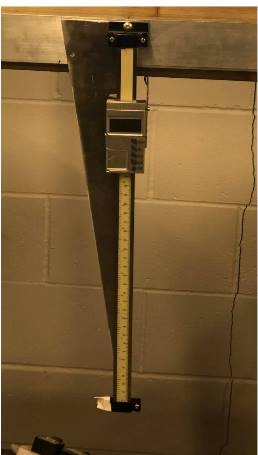
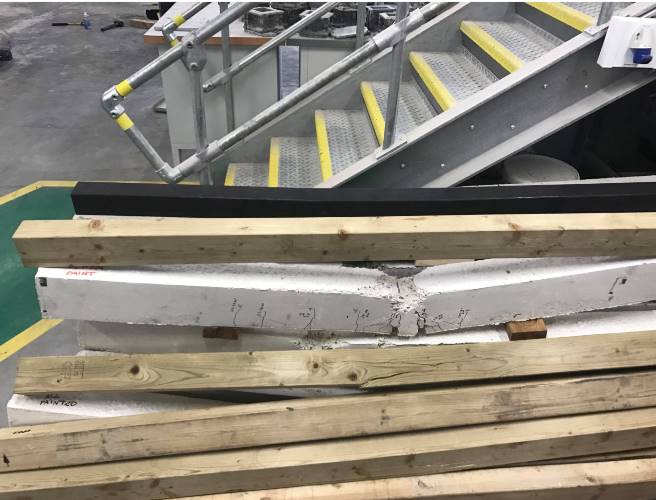
Fig. 2: Measurement of Mass
Table 1: Displacement Data Concrete (mm)
| 0 | 0.13 | 0.273 | 0.44 | 0.51 |
The units applied in the modulus assessments consisted of documenting in MPa. The valuation of the models received consideration in alignment with the ASTM C78 for the three point loads and ASTM C293 for central point loading. In order to derive the values, the averages of the measurement data were the primary consideration. Concrete has the most elevate level of rupture of the three materials examined, concrete, steel and timber.
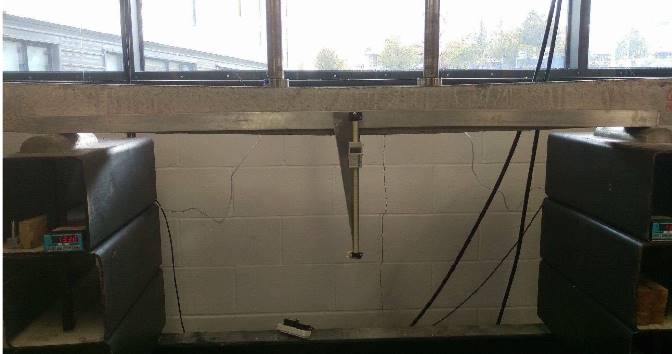
Fig. 3: Concrete before Loading
When steel is the primary construction and resisting medium for the evaluation of bending robustness, a bracket is conventionally implemented for the gravity loads having minute moment arms. The spandrel beams gain support from the bracket plates. The crane rails are also the recipient of the bracket plates. The crane plates were the recipients of support by bolts to the column flanged. The use of the plates minimizes the need for field welding. The splice connection exhibited behavior of a connection with bolted characteristics (AISC 2001. The splice plate is for the use in finite distances. These junctions exhibited the reaction of a cantilever. There were two parameaters observed during the empirical study. These limits were the flexure rupture and the flexural yielding threshold. The algorithm details the value of the resistance ratio. The flexural robust tendency of resistance represents the variable M and the bending minimal yield stress represents the variable Fy. .Finally, Sgross depicts the gross resistance modulus pertaining to the steel plate.
Table 2: Displacement Data Steel (mm)
| 0 | 1.29 | 2.42 | 3.78 | 4.32 |
The limit derivative for the bending rupture has the following formula:
fMn =0.75Fv - Snet
The variable Fv represents the minimal tensile strength and S represents the net resilient area maintained by the plate. The value of plasticity simulated the three dimensional finite paradigm to facilitate greater comprehension of the system's reaction. One of the major challenges during the experiment was the restriction of the torsional movement in the middle section of the steel beam. A recommendation for reducing experimental uncertainty is to cover the superior flanges of the beam. A second recommendation for minimizing the percentage of error in the study was the compacting of the stress, resulting in horizontal bending of the steel plate. The implementation of a hole attached with a bolted nut and washer would have the likelihood of decreasing the outward and inward vertical motion.
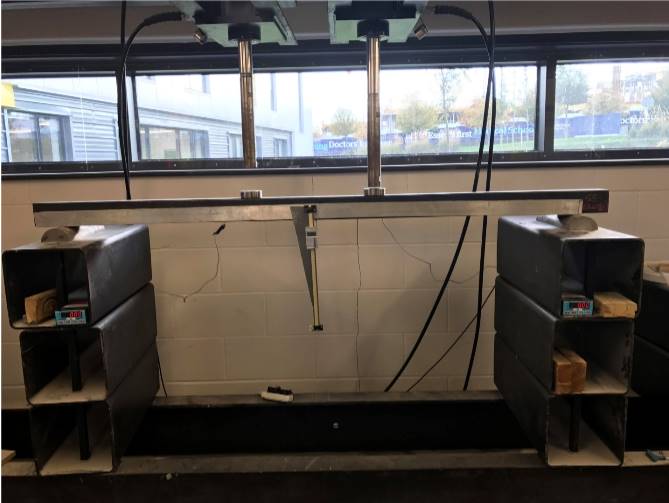
Fig. 4: Steel Beam Prior to Loading
The steel samples received incremental loading to compensate for the short tenure of stiffness. During the placement of the tensile load, the specimen manifested an elevated level of inertial stiffness. The stiffness was notwithstanding the decreasing intensity of the loading force. To ascertain the plasticity of steel, all of the testing samples were the recipients of easements after demonstrating the yield limit. The values derived compared with the finite component example graphically depicted. Several modes of failure of the materials under tension and load were the subject of the research. The point deficiency ranges from excess deflection to flexural breaking.
The performance failure of the steel plate was an attribute of excessive deflection or flexural rupture. The moment of failure observed was the greatest moment applied during the procedure. The graphs manifested linear plastic empirical moment, during tendencies to the point of measurement of the applied moment. Consequent to the augmenting frequency of increasing strain and compaction, the values became substantially enhanced. The influence of the loading and unloading stress of the steel samples demonstrated the elastic stiffness values.The graphs shows the coordinates with regards to several loading points.
Table 3: Displacement Data Timber C-16(mm)
| 0 | 0 | 1.29 | 2.42 | 3.78 | 4.32 |
The axis having the neutral quality showed motion in an upward direction from the steel beam. The derived data exhibits the plastic neutral midpoint not being at the actual center of the steel beam, The point manifesting zero equilibrium receive acquisition by extrapolating the graph coordinates and comparing them to the applied moment. There is a linear correlation between the point of the neutral axis and applied moment during the plasticity process prior to yielding. There is a coincidence between the center of the steel beam and the neutral axis.
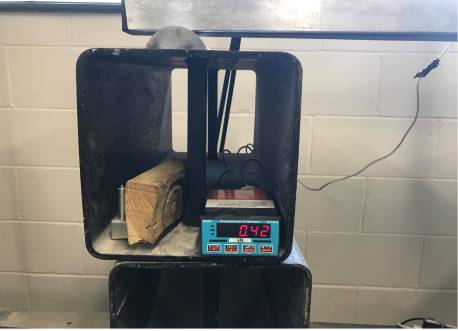
Table 4: Displacement Data Timber C24 (mm)
| 0 | 0 | 1.29 | 2.42 | 3.78 | 4.32 |
Timber is inherently bio degradable. Research has shown the efficiecny of wood preservation techniques attributed by fire, pests and climate change. Wood has the capacity of manifesting centuries of endurance in stable conditions. Timber is a resource requiring increased applications of protective technologies. Biocides are an example of protective implementation for deterring fungal activity.
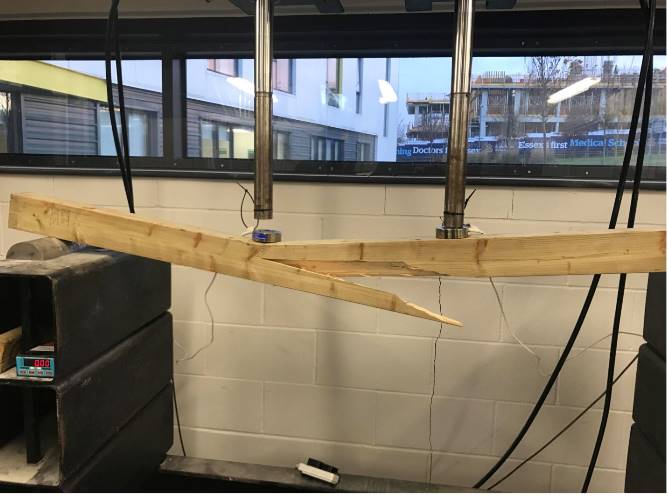
Fig. 6: Timber after Loading
Consolidates were applied to different contexts regarding the timber samples of the experiment due to the penetrating qualities and enhancements attributed to their application. Moreover, the consolidation process increases durability in wood while minimizing shrinkage. The static pliancy observations and trials received substantial review due to their consolidate content. The results of the treated wood differed from the wood which was absent from the consolation process.
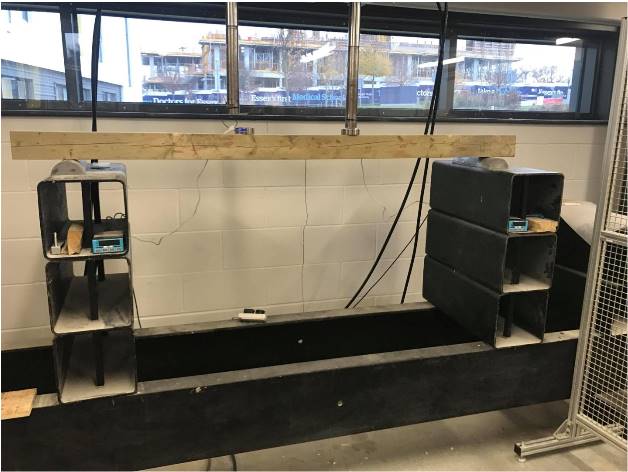
Fig. 7: Timber Prior to Breaking
Conclusion
The bending and fracturing qualities of concrete steel and wood may receive enhancement as a result of the introduction of other substances. The mechanical outcomes demonstrated consistent results. Stress and fracture assessment are integral to the effective use of concrete, steel and timber in the construction manufacturing industries.
Authored by: GraduateWriter.com
Reference List
AISC 2001, AISC Manual of Steel Construction: Load and Resistance Factor Design. AISC.
Henriques, D.F., Nunes, L. and de Brito, J., 2013. Mechanical evaluation of timber conservation processes by bending tests. In Advanced Materials Research (Vol. 778, pp. 612-619).
Kassem, C., Farghaly, A.S. and Benmokrane, B., 2011. Evaluation of flexural behavior and serviceability performance of concrete beams reinforced with FRP bars. Journal of Composites for Construction, 15(5), pp.682-695.
Toutanji, H.A. and Saafi, M., 2000. Flexural behavior of concrete beams reinforced with glass fiber-reinforced polymer (GFRP) bars. ACI Structural Journal.
Yusuf, I.T., Jimoh, Y.A. and Salami, W.A., 2016. An appropriate relationship between flexural strength and compressive strength of palm kernel shell concrete. Alexandria Engineering Journal, 55(2), pp.1553-1562.
